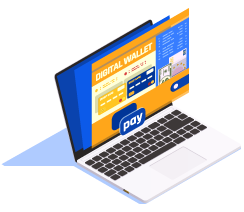
Bitcoin has survived for more than a decade, and while some were slow to consider this cryptocurrency a real player in the modern financial picture, these days, more people than ever are considering adding it to their portfolios or just using it as one more financial option. If you’re still a little unfamiliar with how Bitcoin works, though, or even how to send Bitcoin (or receive it), this quick guide may get you on your feet.
Understanding Bitcoin

In the simplest terminology, Bitcoin is cryptocurrency – digital money. It’s essentially a computer file (or a bit of code) that can be used to purchase products and services. It’s completely virtual money, and these days, it can be used almost anywhere. Some brick and mortar locations accept it (there are pizza places throughout the UK that thrive on Bitcoin buyers), and big businesses like Microsoft accept it for software and other services.
How Bitcoin Works, Actually Explained

Each Bitcoin is a file. The owner stores it in a digital wallet, which is an app on a phone, a software service, or a piece of hardware on a computer. People send and receive Bitcoin through their wallets. Each time a transaction is made, it’s recorded on a public list that anyone can see, but the most important eyes on that list are the nodes (or computers) that make up the Bitcoin network, also called the blockchain. This is the essential part of the cryptocurrency picture. You can trace the history of every Bitcoin because that’s the only way to ensure people don’t spend coins they don’t own or that don’t exist.
The total number of Bitcoins available are limited. Eventually, there will be 21 million total Bitcoins available. Each one must be mined. Miners (people with computers on the blockchain), work to verify Bitcoin transactions. Every time a miner verifies a megabyte of transactions, it becomes another block on the blockchain. That miner is rewarded with a small amount of Bitcoin, and as more transactions are verified, more cryptocurrency is released into circulation – until, of course, the magic number is released. At that point, no additional Bitcoins will ever be added. Bitcoins can still be spent and earned through other means, but it is a limited supply, which is part of what makes it so valuable.
Bitcoin mining depends extensively on not just the miners themselves, but their hardware. In the early days of Bitcoin, individuals could use a standard at-home desktop computer to mine Bitcoin. These days, though, that’s quite different. To create a functional blockchain, one block has to be produced every ten minutes. The difficult increases with every 2,016 blocks mined (which typically takes about two weeks), so the difficulty level has exceeded what a standard desktop computer can actually handle. These days, a miner must have a GPU or an ASIC to actually do this effectively. Even then, though, it’s a numbers game. You can’t predict a pattern based on previous answers, and most miners join groups to help combine computing power and split the rewards.
How Bitcoin Works To Buy and Sell Stuff?

So, now that you know how Bitcoin actually appears, you may wonder how it works in terms of an everyday currency. The answer might surprise you – it works just like traditional currency does. When you buy something online, you send the seller money. When you buy something with Bitcoin, you figure out how to send Bitcoin to the buyer, then off it goes.
To make things a bit simpler, if you have Bitcoin, you invest in a wallet. There are many different solutions, but all of them serve the same purpose, to hold the public and private keys (string of numbers and letters) associated with your Bitcoin. You need both of those to be able to send your Bitcoin elsewhere. For example, imagine you wanted to buy a piece of software with Bitcoin. If the storefront you’re purchasing from accepts Bitcoin, there might be a “Pay with Bitcoin” button. You simply click that button, give the site your wallet information, confirm it, then place your order. A few minutes later, that Bitcoin leaves your wallet, goes to the wallet associated with the storefront, and you’ve completed your transaction.
Every wallet is different. Some use QR codes (particularly those associated with mobile devices), but some use other formats so you can easily send and receive Bitcoin. Most wallets will tell you how to send Bitcoin, how to receive Bitcoin, and how to protect it during the sign-up process. Because Bitcoin is all digital, once the transaction is complete, it can never be reversed. That means if a hacker accesses your system or your wallet and takes all of the Bitcoin, it’s tough to get it back.
Is Bitcoin Right For You?

Bitcoin is a great solution for those looking for currency that is not associated with a traditional bank or even a given government. There are many different pros and cons associated with it. For example, it’s a great choice if you’d prefer not to be tied to a bank or a government, but because it is neither, the price can fluctuate quite a bit. It 2017, Bitcoin prices were headed for $20,000 each. These days, they’re nearly half of that. Additionally, while the blockchain itself is safe, not all wallet solutions are, and there have been several cases where wallets were hacked, Bitcoins were stolen, and they were never recovered. Despite those negatives, though, there are some real positives. There’s potential for real growth with Bitcoin, and most transactions don’t have associated fees that you might see with fiat currency. It’s ideal if you’re looking to avoid another financial crisis like we saw at the end of the 2007.
Wondering how to receive Bitcoin if you’re interested in this unique option? It may be easier than you think. You can exchange cash for Bitcoin. You can also choose to get paid in some independent contractor-type jobs in Bitcoin. There are entire networks of those looking for service providers who are willing to get paid in Bitcoin.
The key to getting involved in the world of Bitcoin is to make sure it’s right for you. Do what you can to learn how Bitcoin works and everything else you can about this form of currency, then give it a try by opening a wallet after you research the available choices. It’s an option many are turning to today, and for good reason. In a world where it seems nothing is certain anymore, Bitcoin provides a more stable solution than the traditional banking system could ever hope to offer.